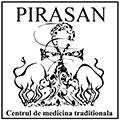Fibroids and metrorrhages have a higher incidence in the women over 35 years of age; one out of three women suffers from this type of disease . The studies in the field have shown that African-American women are the most predisposed to these diseases.
Fibroids and metrorrhages precede the development of benign or malignant tumors in the connected muscular tissue, inside or outside the uterus. Fibroids develop because of estrogen variations in the body. Inappropriate diets and sports were part of most of the patients’ lifestyle. According to studies, most fibroids develop after an extended menstrual cycle, delayed menstruation or an abortion whether spontaneous or induced.
Smaller fibroids are more easily treated, but the ones of bigger sizes are accompanied by profuse and very painful menstruation. Besides, women suffering from this disease may remain sterile and with a fibromatoid uterus. The presence of a uterine fibroma may be associated with thyroid, breast nodules and/or polycystic ovaries.
Allopathic medicine treats this disease by antibiotics, synthetic hormones or surgery. Once more in this case, the traditional medicine offers a noninvasive solution based upon herbal extracts that contain the Chinese herb HAN MAN CIU, also known as the soldier’s herb. In combination with other herbs, it rearranges the tissues and the fibroids are eliminated. In this case, the acupuncture balances the energy of the genital apparatus, preparing it for the herbal treatment (herbal extracts).
The traditional medicine treatment implies the regulation of the neuro-hormonal functions by traditional procedures, because the uterine fibroma occurs due to an excessive secretion of estrogen and it grows when there is an increased secretion of progesterone in the body. The regulation of the progesterone and estrogen levels is made by acting upon the thalamus, the pituitary gland and the thyroid. Thus the growth of the fibroma is stopped. Its resorption is done by removing the existing energy void. A tumor occurs when there is excessive matter in the origin tissue, a misbalance caused by an energy void. The optimum levels of matter and energy are restored by acupuncture procedures. The active substances in the herbs help the action of acupuncture and support the healing process.
What is a uterine fibroma?
The uterine fibroma is a non-cancerous (benign) formation of the uterus. Known also as myoma, leiomyoma, fibromyoma or myofibroma, the formation is made up of smooth muscle tissue or of fibrous tissue. It may vary in size from a pea to a melon, an event in which also the abdominal area is deformed.
What are the symptomps caused by a uterine fibroma?
It also generates a number of specific symptoms, but they do not appear in every case:
- heavy and prolonged menstruations (menorrhagia)
- sometimes menstruations accompanied by clots discharge
- hemorrhages between menstruations (metrorrhagia)
- strong menstrual pains (dysmenorrhea)
- leukorrhea (heavy vaginal discharge that cannot be accounted for by an infection)
- pelvic pain or pressure
- discomfort or pain during intercourse (dyspareunia)
- constipation and distension caused by the pressure exerted upon the large intestine
- difficult intestinal transit
- lumbar pains or pains in the lower limbs (if the tumor exerts pressure upon certain lumbar nerve endings)
- urinary incontinence, frequent urination and sometimes renal blockage (caused by urethral blockage)
- burning in urination
- urinary infections
- the uterus grows in size and the abdomen acquires the aspect of pregnancy
- conception difficulties or sterility (if the tumor blocks the access to the uterine tubes or to the uterine cavity)
- anemia – caused by the menstrual hemorrhages
- fatigue caused by anemia
- when the vascularization of the fibroma is obstructed, there may occur strong pains
- if the cells of the fibroma migrate to the neighboring tissues, the pains are accompanied by fever episodes
When pregnancy was confirmed, the fibroma may cause spontaneous abortion or premature delivery (due to the pressure exerted by the fibroma upon the uterus or the placenta).
The tumour can consist of one or several excrescences. In the latter case the disease is called uterine polyfibromatosis. The location of the fibroma defines its type but it also gives a particular symptomatology:
- submucous – the fibroma develops under the inner wall of the uterus. This type of fibromas cause most often heavy hemorrhage during menstruation, infertility and spontaneous abortion (where there is a pregnancy)
- intramural – the most frequent type. It grows inside the uterine wall and it expands, making the uterus look larger than normal
- subserous – it grows outside the uterine cavity or the membrane lining the uterus. It presents a risk of torsion

